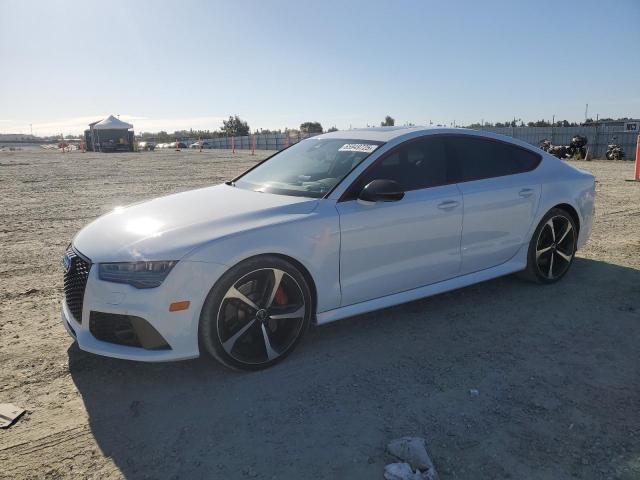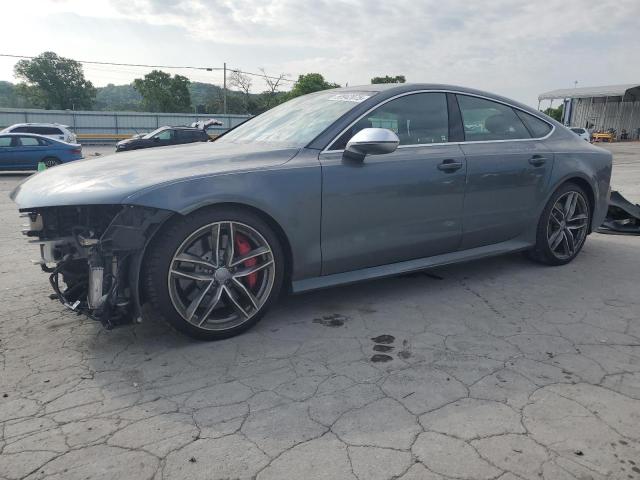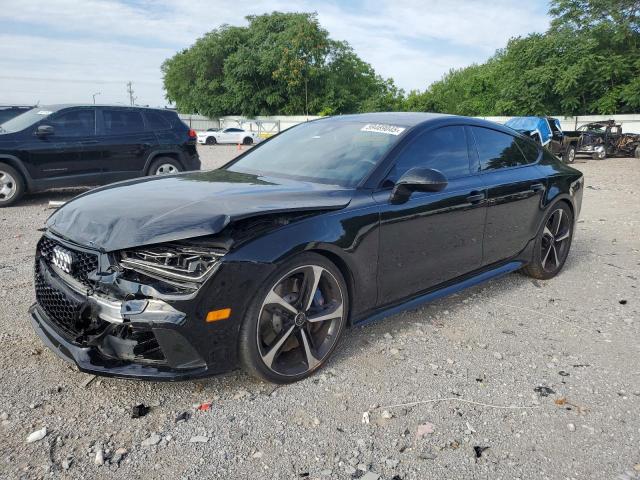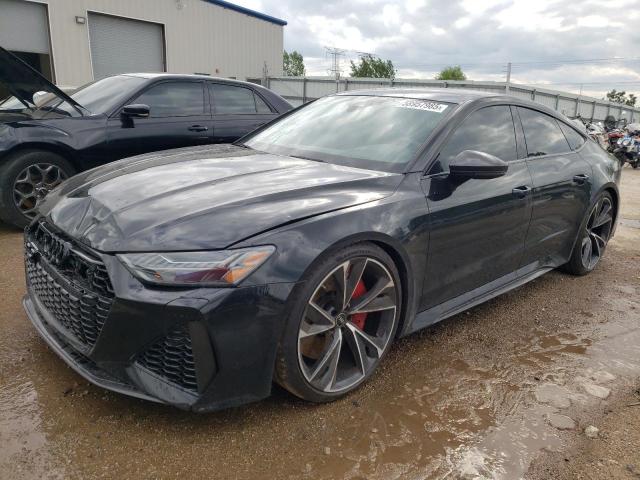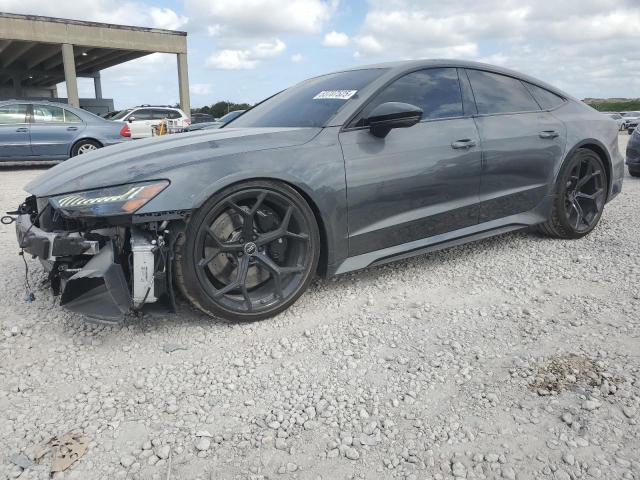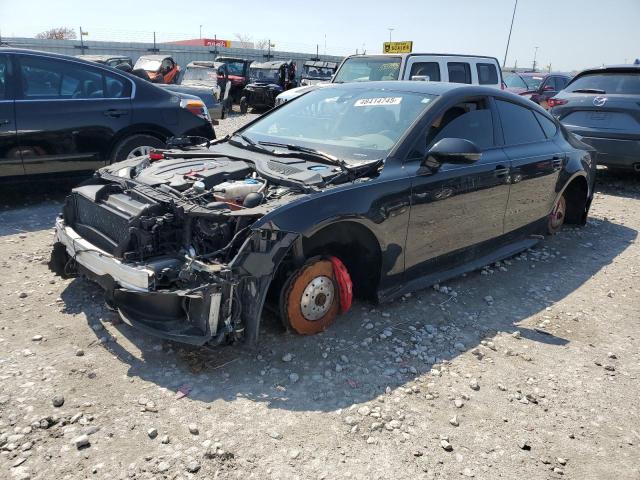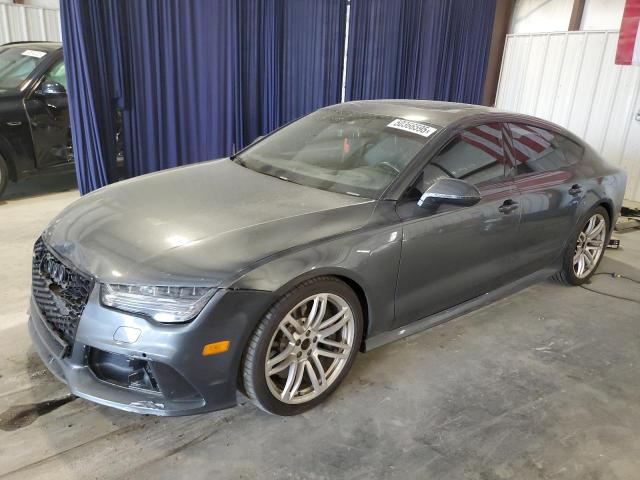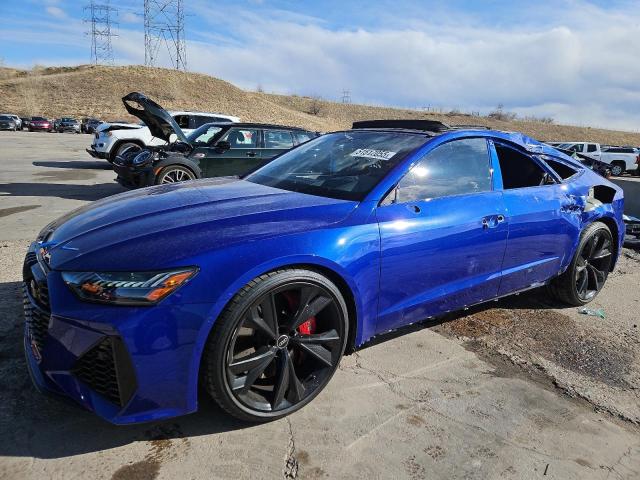2023 AUDI RS7 | WUAPCBF27PN901215
Lot details
- Sale Date2025-01-03
- Lot Number38971785
- ACV110653 $
- Sale documentSalvage (Mississippi)
- LocationGulf Coast (MS)
- Odometer18,825 miles (30,296 km)
- Primary DamageFRONT END
- Secondary DamageLEFT SIDE
- SellerLouisiana Farm Bureau
Vehicle specifications
1
~$130,000
Engine: 4.0L Twin-Turbo V8 Mild-Hybrid
Torque: 850 Nm
0–100 km/h: ~3.4 s
The RS7 embodies Audi’s philosophy of blending supercar performance with everyday usability. Its 4.0-liter twin-turbocharged V8, especially in the updated RS7 Performance trim, delivers 621 horsepower and 627 lb-ft of torque. This allows it to rocket from 0 to 60 mph in just 3.3 seconds—numbers that push the boundaries of what’s possible in a four-door fastback.
Despite its size and luxury, the RS7 is engineered for handling. Adaptive air suspension, quattro all-wheel drive, and a rear sport differential ensure power is delivered with precision and control. Optional rear-wheel steering improves agility at low speeds and stability at high speeds, giving the RS7 remarkable composure through corners and responsiveness on twisty roads.
Visually, the RS7 is both menacing and elegant. Wide fenders, aggressive RS-specific bumpers, and massive wheels signal its capability, while the fastback profile and LED lighting add sophistication. The interior reinforces this duality with RS sport seats, Alcantara details, and Audi’s most advanced tech suite, creating an atmosphere that’s equal parts cockpit and lounge. It’s a full-size performance car without compromise.
Final Bid Audi RS7 (2023)
$38,250
$51,025
$62,500
Body Styles
The Audi RS7 is offered exclusively as a five-door Sportback, which blends the silhouette of a fastback coupé with the utility of a sedan and hatchback in one package. Its aggressive yet elegant proportions are defined by flared wheel arches, wide shoulders, a low-slung roofline, and a prominent honeycomb grille unique to RS models. Despite its muscular presence, the RS7 retains practical functionality with a full rear liftgate and spacious cargo area, positioning it as a high-performance executive tourer with everyday usability and unmistakable street presence.
Model Name Meaning (Manufacturer)
“Audi RS7” denotes the most performance-focused variant of the A7 model line. The prefix “RS” stands for RennSport, which is German for “racing sport” — Audi Sport GmbH’s exclusive label for its most potent models. The number “7” designates the vehicle’s positioning within Audi’s size and luxury hierarchy, placing it between the executive-class A6 and flagship A8. The RS7 thus represents a fusion of supercar-grade engineering with business-class refinement.
Model Name Meaning (Languages)
The name “RS7” combines the abbreviation “RS” from the German words Renn (race) and Sport (sport), signifying motorsport-level performance bred for the road. The numeral “7” traces back to the Latin septem, representing completeness or prestige in many cultures. In Audi’s lineup, the “7” also symbolizes flowing design and grand touring capability — making the RS7 a symbol of refined aggression and high-speed mastery with German precision.
Body & Interior Colors and Rims
The RS7 is available in a carefully selected range of factory colors that reflect both its luxury and motorsport heritage. Popular solid and metallic finishes include Mythos Black, Daytona Gray Pearl, Nardo Gray, Glacier White, Tango Red, and Ascari Blue. RS-exclusive finishes like Sebring Black Crystal and Dew Silver bring added depth and sophistication, while Audi’s Audi Exclusive program allows for fully custom paintwork.
Inside, the RS7 balances ultra-modern minimalism with tactile opulence. Standard RS embossing, Valcona leather with honeycomb stitching, contrast seatbelts, and Alcantara headliners underscore its premium intent. Trim inlays come in Carbon Twill, Aluminum Race, or Fine Grain Ash, with optional matte carbon or piano black accents. The cockpit includes a fully digital Audi Virtual Cockpit with RS-specific performance displays, while the RS design packages (red, gray, or blue) add color-themed seatbelts, contrast stitching, and ambient lighting.
Wheel offerings begin with 21-inch 10-spoke RS alloys, with available 22-inch V-spoke or Y-design wheels in matte titanium, gloss black, or diamond-cut finishes. Behind them sit massive ventilated RS steel or optional carbon ceramic brakes with red, gray, or blue calipers — visually anchoring the RS7’s high-performance potential.
Top Expensive Options
- RS Carbon Ceramic Brake System: $9,000
- Bang & Olufsen Advanced 3D Audio (23 speakers, 1,920W): $6,500
- RS Sport Suspension Plus with Dynamic Ride Control: $2,500
- Carbon Exterior Package (diffuser, splitter, mirror caps): $4,800
- Dynamic Package Plus (top speed raised to 305 km/h): $8,500
- Night Vision Assistant with thermal imaging: $2,500
- Audi Exclusive Paint/Interior Customization: $5,900+
- Head-Up Display with RS graphics: $1,500
- RS Design Package (Red/Gray/Blue interior theme): $2,750
- Executive Rear Seat Package (ventilation, blinds, heated): $3,800
vs Competitors
In the realm of ultra-performance luxury sedans and sportbacks, the Audi RS7 faces fierce competition from the Mercedes-AMG GT 63 S 4-Door, Porsche Panamera Turbo S, and BMW M8 Gran Coupe. Compared to the AMG GT 63 S, the RS7 delivers similar acceleration with slightly more composure and daily usability. The Mercedes offers a louder, more extroverted exhaust note and rear-wheel-biased behavior, whereas the Audi remains planted and drama-free thanks to its quattro AWD system and mild-hybrid support, offering effortless surges of torque and better winter usability.
The Porsche Panamera Turbo S leans harder into precision and feedback, especially when equipped with rear-wheel steering and Porsche Active Suspension Management. While the RS7 can’t quite match the Porsche in terms of raw steering feel or track balance, it offers a more relaxed ride and considerably more interior space — especially in the rear. The Panamera’s options are also pricier, making the RS7 a better value for those seeking maximum performance without drifting into supercar territory.
Against the BMW M8 Gran Coupe, the RS7 provides a more mature and versatile experience. While the M8 is sharper and more aggressively tuned for apex-hunting, its cabin and controls may feel less intuitive or luxurious to some buyers. Audi’s interior tech — led by its dual-screen MMI and virtual cockpit — feels more advanced and better integrated. Additionally, the RS7’s hatchback design offers significantly more practicality than the M8’s traditional trunk, giving it an edge in real-world utility without sacrificing visual drama or outright pace.
Fun Fact
Despite weighing over 2,100 kg, the Audi RS7 can out-accelerate many supercars from the 2000s — and thanks to its 48V mild-hybrid system, it can coast with the engine off at highway speeds to save fuel, restart instantly when needed, and even power the active suspension pre-emptively before hitting bumps. It’s one of the few cars in the world that can silently glide through a neighborhood — or unleash a full 591-hp thunderclap at the touch of the throttle.


